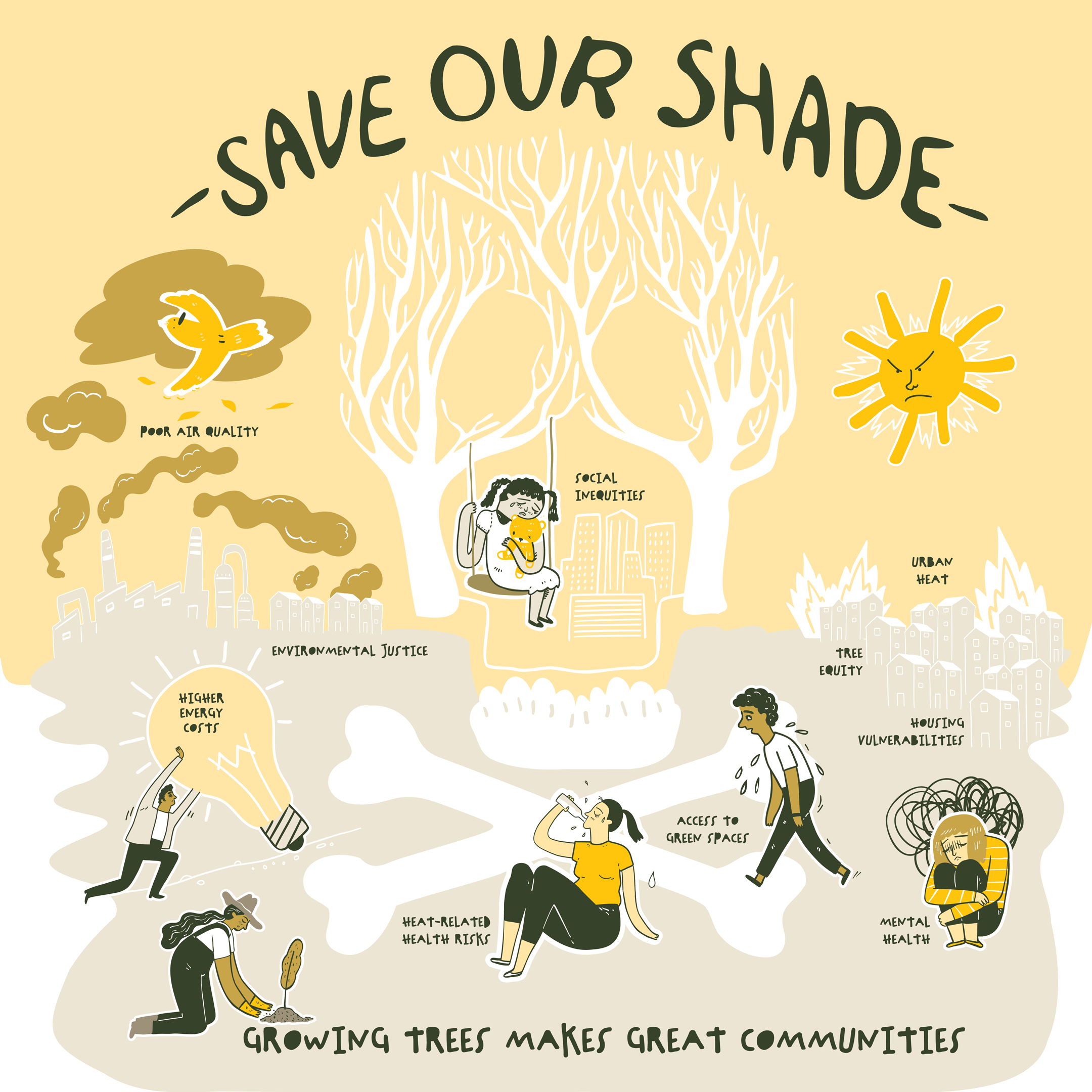
Save Our Shade: Growing Trees Make Great Communities
In the heart of our cities, where urban landscapes meet social realities, a silent struggle unfolds. Disadvantaged communities, often overlooked and underserved, bear a disproportionate burden of the adverse effects linked to urban heat and the absence of a thriving tree canopy. As we embark on our campaign to Save Our Shade, let’s delve into the challenges faced by these communities and how your support can make a tangible difference.
1. Urban Heat: Urban heat, a phenomenon amplified by the absence of tree canopy, poses a significant threat to disadvantaged communities. The built environment, with its concrete expanses, exacerbates heat-related challenges, creating discomfort and health risks for those already facing numerous socio-economic hardships.
2. Heat-Related Health Risks: In the sweltering heat of urban environments, individuals in disadvantaged communities face heightened risks of heat-related illnesses. Limited access to cooling resources, healthcare, and information exacerbates the vulnerability of populations, particularly the elderly and those with pre-existing health conditions.
3. Limited Access to Green Spaces: Disadvantaged neighborhoods often lack the verdant respites that thriving tree canopies provide. The scarcity of green spaces not only denies residents relief from high temperatures but also limits opportunities for outdoor recreation and social activities, impacting overall well-being.
4. Higher Energy Costs: Inadequate tree canopy contributes to the urban heat island effect, escalating temperatures and driving up the demand for cooling during hot seasons. Residents in disadvantaged communities grapple with the burden of higher energy costs for air conditioning, placing an additional strain on limited financial resources.
5. Housing Vulnerabilities: Older, less energy-efficient housing characterizes many poorer communities, intensifying indoor heat during summer months. Limited insulation and a dearth of shade create uncomfortable living conditions, leaving residents more vulnerable to extreme temperatures.
6. Limited Tree Equity: Disadvantaged neighborhoods often face “tree equity” challenges, with fewer trees and green infrastructure compared to wealthier areas. This exacerbates the urban heat island effect, intensifying health and environmental disparities among residents.
7. Air Quality Disparities: Positioned near industrial zones and major roadways, communities with lower socioeconomic status contend with poorer air quality. The confluence of heat and air pollution poses severe health consequences, particularly in terms of respiratory problems for residents.
8. Social Inequities and Environmental Justice: Environmental burdens and heat-related challenges disproportionately affect disadvantaged communities, reflecting existing social and economic inequalities. Participation in decision-making processes related to urban planning and environmental policies becomes an uphill battle for these communities.
9. Environmental Justice: Many disadvantaged communities find themselves in the shadows of factories, high-volume roadways, and busy warehousing areas. The environmental landscape, marked by industrial footprints, further compounds the challenges faced by these communities.
10. Mental Health: The absence of adequate urban forest canopy and green spaces takes a toll on mental health. Anxiety and stress become constant companions for residents who lack the soothing embrace of nature in their immediate surroundings.
As we navigate these challenges, your support becomes the catalyst for change. Join us in the Save Our Shade campaign, where every contribution helps us plant seeds of resilience, nurture environmental equity, and foster healthier, happier communities. Together, we can turn the tide for those who need it most.


